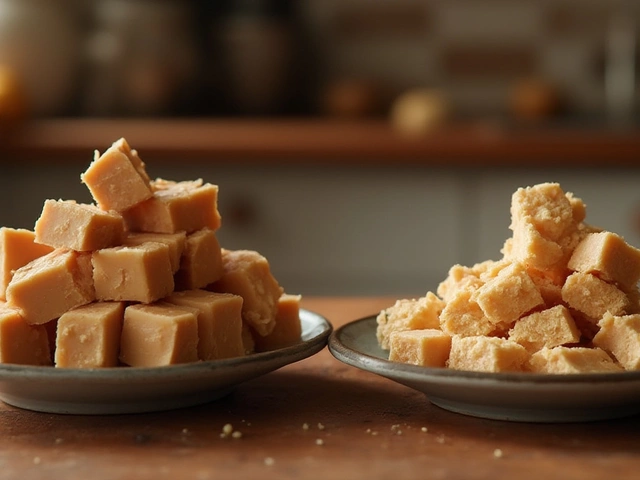Fudge Without Vanilla: How to Get Smooth, Creamy Results
When you hear fudge without vanilla, a classic chocolate fudge made without any vanilla extract, relying on butter, sugar, and cocoa for its rich flavor. Also known as vanilla‑free fudge, it still needs precise temperature control to avoid graininess. The process hinges on the soft‑ball stage, the sugar‑syrup temperature (about 235‑240°F) where a small ball forms in cold water, signaling the right moment to stop cooking. To hit that point reliably, a candy thermometer, a heat‑proof probe that reads liquid temperature accurately is essential. Master these basics and you’ll see why fudge without vanilla can be just as luscious as its flavored cousins.
Key Factors for Vanilla‑Free Fudge
The soft‑ball stage is the linchpin of any good fudge. Below 235°F the sugar crystals stay loose, leading to a runny, under‑set fudge. Above 240°F the syrup hardens too quickly, trapping large crystals and creating that dreaded grainy texture. By keeping your mixture within the 235‑240°F window, you allow the sugar to form tiny, uniform crystals while the butter and cocoa coat each particle, giving you that melt‑in‑your‑mouth feel. A candy thermometer lets you watch the temperature rise in real time, so you can remove the pot the instant the soft‑ball stage is reached, avoiding guesswork and over‑cooking.
Texture is another story. Creamy fudge, fudge that stays glossy and buttery after cooling, results from proper cooling and beating. Once you hit the soft‑ball stage, let the pot sit off the heat for a few minutes, then stir vigorously until the mixture thickens and loses its shine. This agitation encourages tiny crystal formation, which is the secret to a smooth bite. Skipping this step or stirring too early locks the mixture in a glossy, but still liquid, state that sets into a crumbly mess.
Altitude can throw a wrench into your fudge plans. At higher elevations, water boils lower, so the soft‑ball stage occurs at a reduced temperature. If you live above 3,000 feet, aim for the lower end of the range—about 232‑235°F—to compensate. Some bakers also add a splash of extra water to the syrup; this raises the boiling point slightly, helping you stay in the safe zone. Adjusting the target temperature based on your location ensures your vanilla‑free fudge stays smooth, no matter where you are.
Because you’re leaving vanilla out, you might wonder about flavor depth. The good news is that cocoa, butter, and a pinch of salt already create a rich base. If you crave a twist, consider adding a teaspoon of espresso powder, a dash of almond extract, or a swirl of caramel. These additions keep the fudge “vanilla‑free” while still delivering complexity. Just remember to add any extra flavor after you’ve removed the pot from the heat, so the delicate aromatics don’t evaporate.
With the temperature tricks, texture tips, altitude tweaks, and optional flavor boosters in hand, you’re set to whip up a batch of foolproof fudge without vanilla. Below you’ll find a curated list of our most popular posts that dive deeper into each of these areas—from detailed temperature guides to troubleshooting grainy fudge. Explore the articles to sharpen your technique and start serving up velvety chocolate squares that impress every sweet‑tooth in the house.

What Happens When You Skip Vanilla in Fudge? Effects on Flavor & Texture
Learn how skipping vanilla changes fudge flavor, texture, and aroma, plus smart substitutes and troubleshooting tips for perfect chocolate fudge every time.
View More




